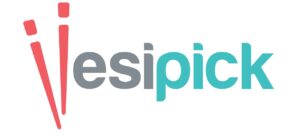(How smart test teams should work in agile projects)
What would you do if you were called up for a testing job where the project is running at a speed with frequent weekly builds, an almost angry client, and there is no stopping errors from popping up on every release?
How do you get up to speed with everything? How do you get the product knowledge exactly to the point where you can merge yourself with the existing test team and start conversing with the project manager and developers with the right vocabulary?
You are a human; you do need time and you do need to have access to the right resources.
The hooks:
Imagine the International Space Station being built in orbit around the earth and they forget to add the modules for the Soyuz capsule to attach itself to the ISS – everything would have failed.
In the case of smart project teams and smarter project managers, and when the tasks are running at a speed, the managers make sure that adding up any new human resource to the project’s bandwagon would need a certain “docking” mechanism.
Now, you must think, why do we need hooks and clamps to onboard any resource where the person being onboarded should be smart enough to understand the job? No, you do it because you don’t need anyone to create the scuffles and eat up your time.
Make a checklist, design a short 20-minute meeting, and deliver the guidelines. Open up a communication channel, a meeting room, an email address, or a phone number to contact you if they are stuck somewhere.
Dragged across the meetings:
The next thing you need to do is to get the people in a string of meetings where they can gain confidence with other team members and eventually gel up to the task. You can ask for opinions and give certain assignments, also within the meeting you can ask for reconfirmations.
A smart person will catch up and will provide a more confident participation approach in the next meeting, others may fold.
Gaining the right Product knowledge:
That’s the tricky part, but it’s not impossible. Gaining product knowledge with the right vocabulary is achievable with a simple heuristic of a series of simple searches on Google or ChatGPT, gaining access to the staging version, start building a mind-map of the product, and within that period, start using it.
The trick is to create the datasets as realistically as possible, don’t use the dummy data as “ABC” “Test” and “User1123” – instead use the exact domain user data as they would have used. Along the way, enrich your mind map, keep maturing it, put up conditions, the loopholes, and where rules can be bent.
This is done in a very quick and focused manner; the time is usually divided into sessions of 30 to 40 minutes each. Every session has a defined output and at the end of each session, results are compared.
So, if you are building context for a task management system, then you should be aware of how a “Task Management System” works and your data should reflect the same.
Becoming Jack of all but master of some:
Gaining product knowledge is the first step toward reaching that momentum, but be moderate about the product knowledge. Meaning, that you need to have a working knowledge of the system and where and how the parts are linked together, but to address the agility factor while working in an agile environment, the best is to gain expert knowledge in one or two modules of the system (depending on the size of the system)
This way, when the release comes along, your work is more focused on some particular area rather than a shallow approach towards testing.
Setting the right release strategy:
Setting up a good release strategy also helps you set your bearings in these situations. The best way to do this is to have a dual-release approach with one way facing the developers and the other facing the clients. This way you will find more confidence in your testing as developers want to have their tickets closed while customers want to have their scenarios and features closed.
This works as a controlling factor for the team where they are bound to close the tickets but along the way gain more product confidence.
Another control factor is to implement a set of short touch-base meetings where the productive goals are set and delivered. This helps the team get a balance on the ticket closure and less amount of slack being cut for anyone dragging along.
Concluding on:
It is always a team effort and there is no other way around it. Even if you are an expert in your field, if you are faced with a team that is hard to gel up, you will not gel up. The best way is to adapt heuristics that work as a safety net and use the experience.
The way application development is carried out these days, things will become simpler for the users but way more complicated for the developers and testers. The only solution is to create an assembly line where people, the AI, and the processes can work together, and eventually, we have a working product at the end of the line.



